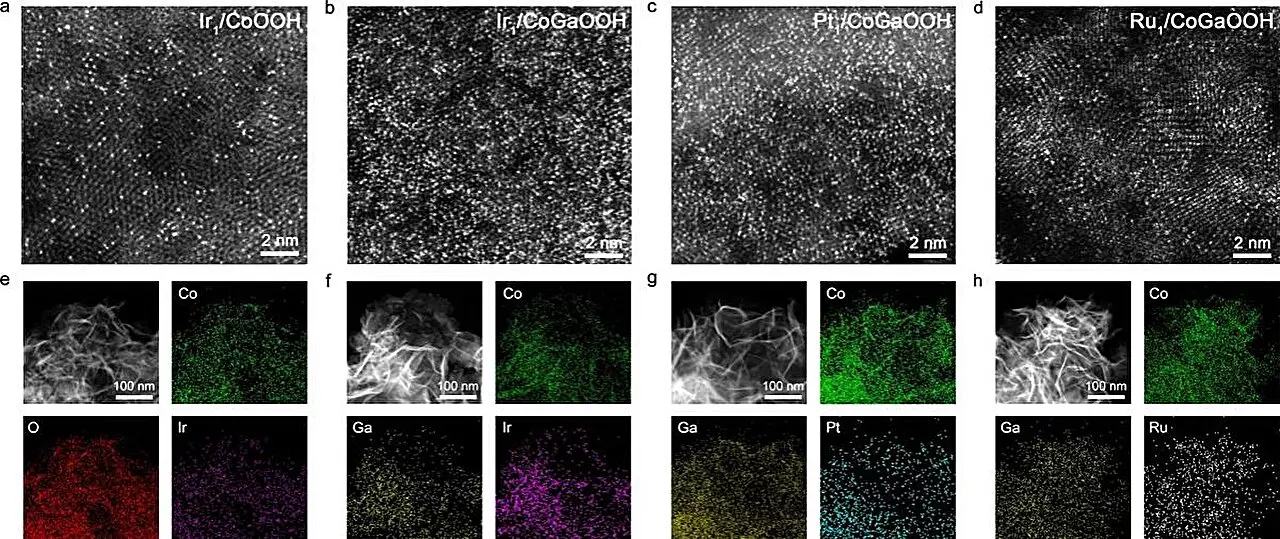As the demand for sustainable energy sources intensifies against the backdrop of climate change and dwindling fossil fuel reserves, hydrogen energy has emerged as a front-runner in the quest for green, low-carbon solutions. Water splitting, an electrochemical process to produce hydrogen, holds considerable promise in this energy transition. Nonetheless, the efficiency of this process is severely hampered by the sluggish kinetics of the oxygen evolution reaction (OER) taking place at the anode. To overcome this bottleneck, research into highly effective catalysts, particularly those that can optimize OER, has become paramount.
The OER is crucial for producing hydrogen via water electrolysis, yet it presents notable challenges, primarily due to its inherent slow reaction rates. This inefficiency is linked to the need for advanced catalytic materials that can enhance the reaction pace without incurring excessive energy costs. Traditional catalysts may suffer from limited performance, necessitating innovative approaches. Underpinning the development of catalysts are the principles of atomic structure and interactions at the molecular level, which directly influence catalytic performance.
Recent advancements in catalyst design highlight the potential of single-atom catalysts (SACs) in improving the electrochemical performance of OER processes. Specifically, a team led by Professor Bao Jun from the University of Science and Technology of China has made significant strides in this field, unveiling a cobalt-based high-density iridium (Ir) single-atom catalyst. Their work, published in Angewandte Chemie, demonstrates a paradigm shift in catalyst performance through the concept of neighboring synergetic interactions among single atoms.
The effectiveness of these SACs is inherently tied to the distribution of single atoms across the catalyst’s surface. As researchers increase the density of these single atoms, they diminish the distances separating them, fostering synergies that enhance the adsorption of reaction intermediates. This discovery posits that by architecting catalysts with high atom density, it is possible to optimize their performance significantly.
The research team employed gallium (Ga) atoms to manipulate the electronic structure of the cobalt-based oxide lattice, thereby enhancing the interaction between oxygen defect sites and the single-atom precursors. This innovative approach successfully created a series of high-density SACs, demonstrating that tailored fabrication approaches could be leveraged to improve catalytic outcomes.
In their evaluation of the OER performance across their newly developed catalysts, the researchers focused particularly on the high-density Ir single-atom catalyst named Nei-Ir1/CoGaOOH. The results were revealing: this catalyst exhibited a low overpotential of just 170 mV at a current density of 10 mA cm-2 and showcased durability over a staggering 2000 hours. At a higher current density of 1 A cm-2, it maintained stable operations in alkaline electrolyte conditions for over 50 hours, confirming its practical applicability.
In situ Raman spectroscopy offered further assurance of the catalyst’s structural stability during the OER process, thus underlining its pragmatic potential for sustainable hydrogen production.
Diving deeper into the mechanisms at play, the researchers concluded that the enhancement of the catalyst’s performance is primarily due to the neighboring synergetic interactions rather than a mere optimization of electronic structures. The stabilization of *OOH intermediates via hydrogen bonding significantly reduces the reaction energy barrier, facilitating a more efficient catalytic process.
The implications of these findings are substantial. This pioneering investigation unveils not only critical insights into catalyst design but also offers a roadmap for future innovations in electrochemical OER catalysts. As the demand for hydrogen energy continues to grow, catalysts like the high-density Ir single-atom systems developed by Professor Bao Jun’s team could play a pivotal role in revolutionizing hydrogen production technology.
The rise of high-density single-atom catalysts stands as a beacon of hope in tackling the challenges of the energy crisis, marking a significant milestone in our pursuit of sustainable energy solutions for a greener future.

